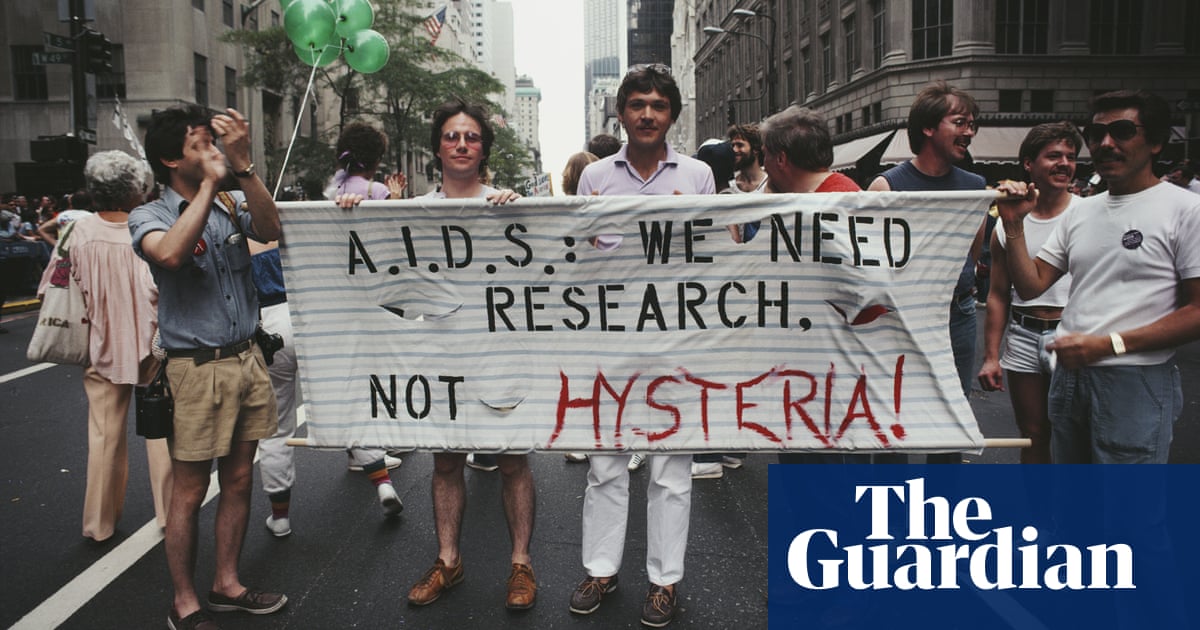
A new history of the New York Times has revived a decades-long debate about why the Times failed to give Aids the blanket coverage it deserved, after doctors discovered an often fatal disease they first believed only attacked gay men.
The Times, by Adam Nagourney, repeats the conventional wisdom: the paper failed for years to give Aids enough attention, because its assigning editors were influenced by the homophobia of its top editor, Abe Rosenthal.
As Nagourney proves, Rosenthal did indeed hate gay people and many of his subordinates refused to assign stories about gay subjects. Nagourney writes: “In the 1980s, the Aids epidemic hit New York’s gay community particularly hard, but that would have been difficult to discern from the pages of the Times.”
But a closer look reveals other important reasons for the uneven coverage, including misleading information provided by doctors and resistance from some gay leaders, who feared too much publicity could send homosexuals to concentration camps.
The Times medical correspondent, Lawrence K Altman, actually broke the story of the new disease in the mainstream media, on 3 July 1981. Nagourney calls it “a relatively short story” which did not make the front page. The piece was 897 words long, filled a single column inside the paper and did an excellent job of reporting what doctors believed they knew.
Altman wrote: “Dr Alvin E Friedman-Kien of New York University Medical Center, one of the investigators, described the appearance of the outbreak as ‘rather devastating’.”
Unfortunately, the article also contained two points which turned out to be false: that there was “no evidence of contagion”, and “no apparent danger to non-homosexuals”.
“The best evidence against contagion,” a doctor said, “is that no cases have been reported to date outside the homosexual community or in women.”
Five months passed before the Times published on Aids again. That was a short wire service piece which reinforced the false idea only homosexuals were at risk: “Three studies published today described a cluster of cases in which usually harmless viruses and bacteria can produce fatal illnesses, almost exclusively among homosexual men.”
As long as the available evidence said this was a disease that only affected a small minority of Times readers, and was not contagious, it was a hard sell for the front page. Even the initial name of the disease encouraged heterosexuals to believe they were immune. Aids was originally called Grid, for Gay Related Immune Deficiency.
Altman has long said he covered news of the disease as soon as it was available from researchers, and that was why his next article did not appear until May 1982. It was almost twice as long as his first. Although there was still no proof Grid was contagious, the piece contained this warning: “Dr Lawrence D Mass, a New York City physician, said that ‘gay people whose life style consists of anonymous sexual encounters are going to have to do some serious rethinking’.”
Just 13 years after the birth of the modern gay liberation moment, from the Stonewall riots in New York in 1969, millions of men rejected any suggestion they needed to become less promiscuous, even if to save their lives. When a prominent gay New York doctor suggested bath houses should post warnings about the epidemic and the dangers of promiscuous sex, he was denounced as “a monogamist stirring panic”. Similarly, when a report leaked at the end of 1982 suggesting at least 1% of the gay men in San Francisco’s Castro District were already infected, a gay activist pleaded with a gay journalist, Randy Shilts, not to write about it.
“They’ll put barbed wire up around the Castro,” said Randy Stallings. “It will create panic.” Shilts wrote the story anyway.
Now, Nagourney cites as further evidence of indifference the Times’s failure to cover a fundraiser for the Gay Men’s Health Crisis which drew 17,601 people in summer 1983. The author also says the paper’s reluctance to use the words “anal intercourse” made it harder for readers to learn about one of the main ways the disease was transmitted.
However, 10 weeks before that fundraiser, the Times Magazine actually published a 6,000-word piece, A New Disease’s Deadly Odyssey. Written by Robin Marantz Henig, it was probably the most important article then published by any mainstream publication. It listed “anal intercourse” as one of the most dangerous activities a gay man could engage in.
Nagourney told the Guardian he relied upon an interview with Max Frankel – Abe Rosenthal’s arch-enemy at the Times – for the idea Rosenthal “refused to let anal intercourse be discussed in the news pages”. Henig’s piece was “very interesting”, he said – but he had not heard of it while writing his book.
Charles Kaiser is the author of The Gay Metropolis: The Landmark History of Gay Life in America












